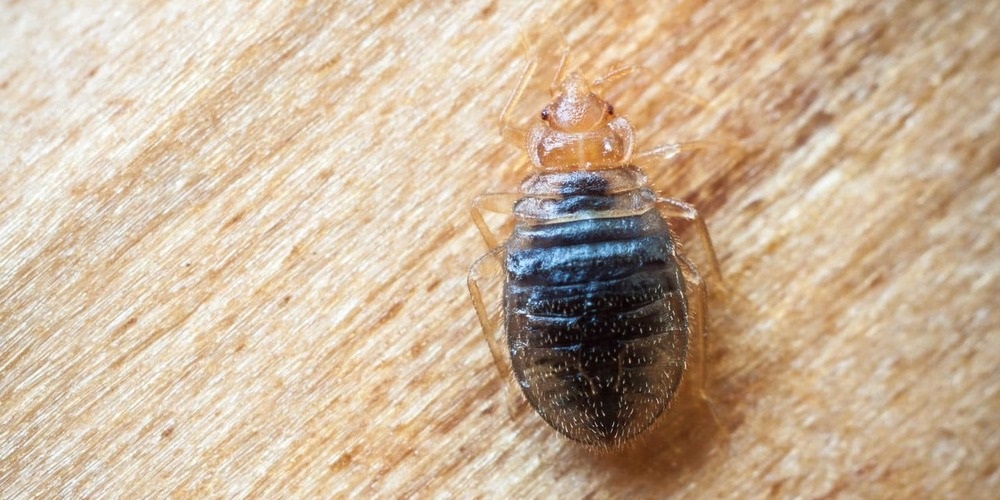
Bed bugs are resilient pests that can infest our homes, causing discomfort and distress—with Florida among the US states most heavily affected by bed bugs. They are masters of hiding and prefer to dwell in crevices near their human hosts, and with their ability to survive without feeding for months, bugs can easily spread from one location to another.
These pesky invaders thrive in warm and humid conditions while going into recession during cooler months. One of the biggest problems with bed bug stages is that you know about their presence only when they become nymphs or adults. In this article we’ll discuss the life stages of bed bugs, knowing their lifecycle will help you understand what you’re up against and when to call a professional for permanent bed bug treatment and extermination.
Life Stages of Bed Bugs
The three main life stages of bed bugs are egg, nymph, and adult. The bed bug life cycle time is 6-12 months if they reach adulthood.
The Egg Stage
The first in the bed bug stages of life involves the female laying tiny white eggs in clusters. They are about 1 mm in size and are often hidden in cracks, crevices, and mattress seams.
The Nymph Stage
Once the eggs hatch, nymphs emerge, smaller than adults, and undergo several molting stages to grow. After each molt, they develop a new exoskeleton, gradually becoming larger and darker in color. Nymphs require a blood meal to molt and progress to the next stage.
Adulthood
After going through five nymphal stages, bed bugs reach adulthood, which is the size of an apple seed. They have flat, oval-shaped bodies and are reddish-brown.
They are fully developed and capable of reproducing. Adults also need regular blood meals to survive and reproduce.
Signs of Bed Bug Infestation in Florida
By being aware of these indicators and stages of bed bugs, you can take prompt action to address the issue and prevent further spread.
Bites and Skin Reactions
Bed bugs feed on human blood, usually at night. If you wake up with unexplained itchy red welts or clusters on your body, it could be a sign of infestation. However, it’s important to note that everyone’s skin doesn’t react to their bites the same way, so you may need to look for additional evidence.
Stains on Bedding
Bed bugs leave behind dark brown or reddish stains on bedding or mattresses. These stains are a result of fecal matter or crushed bugs. Check your sheets, pillowcases, and mattress for these telltale marks.
Rusty or Dark Spots on Furniture
As bed bugs move around, they may leave behind rusty or dark spots on furniture, walls, or other surfaces. These spots are caused by their excrement and can be found near their hiding spots.
Musty Odor
Bed bugs emit a distinct musty odor, often described as a sweet, sickly scent. If you notice an unusual smell in your bedroom or other areas of your home, it could be a sign of a bed bug infestation.
Live Bugs or Shells
The presence of live bed bugs or their shed exoskeletons clearly indicates an infestation. Check for small, flat, oval-shaped bugs (about the size of an apple seed) in the seams of your mattress, box springs, bed frame, or other furniture.
Small Bloodstains
Sometimes, bed bugs get crushed while feeding, leaving small blood stains on your sheets, pajamas, or other fabrics. These stains are often visible as small dots.
Dark Fecal Matter
Bed bug feces resemble small dark spots or smears on surfaces. Look for these signs on your bedding, furniture, walls, or even cracks and crevices.
How to Eliminate Bed Bugs Effectively?
Here are some steps you can take at different life stages of bed bugs to eliminate them effectively.
Isolate Infested Areas
Inspect your bed, mattress, and surrounding areas for blood stains, dark spots, or discarded exoskeletons. Encase your mattress and box spring in bed with bug-proof covers to trap any bugs inside and prevent further infestation.
Clean Bedding and Clothing
Wash all infested bedding, clothing, and linens in hot water and dry them on high heat. Vacuum your mattress, furniture, and carpets to remove different bed bugs stages of life.
Reduce Clutter
Declutter your living space, as bed bugs find plenty of hiding spots in cluttered areas. Clear out any unnecessary items, such as old magazines, cardboard boxes, or piles of clothes.
Use Insecticides
Apply a suitable insecticide specifically labeled for bed bugs to infested areas. Follow the instructions carefully and ensure proper ventilation. Remember to treat cracks, crevices, and any potential hiding places for bed bugs.
Steam Treatment
Use a high-quality steamer to treat your mattress, furniture, and other infested areas. The high heat effectively kills bed bugs and their eggs. Ensure thorough coverage and steam along seams, tufts, and edges.
Hire a Professional Bed Bug Exterminator
No matter how much you try, home bed bug treatment still falls short of eliminating them. The best way to do it is to hire a professional bed bug company like Gregory’s Pest Control, as we fulfil the criteria determined by the US Environmental Protection Agency.
We understand the stages of bed bugs and inspect every corner of your home for bed bug detection and extermination. Being committed bed bug controllers, we do a follow-up inspection after 21 days to ensure everything is going well.
Contact us right away and protect your home from bed bugs. We guarantee highly professional services and 100% elimination of the annoying bed bug cycle.

Paul Gregory
Owner/President of Gregory’s Pest Control
I’m a 2nd generation pest control owner who started working for my father in 1999. I was raised in South Florida and feel blessed to call it home for my entire adult life. As a long-term Florida resident, I recognize the challenges of controlling the many different pests that thrive in our subtropical climate. In particular, I understand how difficult it can be to prevent pests from invading our homes and businesses. By helping families solve their pest problems so they can live safer, more comfortable lives, I feel I am also meeting my family’s commitment to help our community. When I’m not out fighting pests, you can find me on the golf course or out on a soccer field where I have been fortunate enough to coach soccer to kids of all ages for the past 20 years.




